Hyundai i30 Wagon VS Ford Puma – Specs, Efficiency & Price Comparison
Which model is the better choice – the Hyundai i30 Wagon or the Ford Puma? We compare performance (140 HP vs 168 HP), boot capacity (602 L vs 523 L), efficiency (5.60 L vs 13.10 kWh5.40 L), and of course, the price (24500 £ vs 24800 £).
Find out now which car fits your needs better!
The Hyundai i30 Wagon (Estate) is powered by a Petrol or Petrol MHEV engine and comes with a Manuel or Automatic transmission. In comparison, the Ford Puma (SUV) features a Petrol MHEV or Electric engine and a Manuel or Automatic gearbox.
When it comes to boot capacity, the Hyundai i30 Wagon offers 602 L, while the Ford Puma provides 523 L – depending on what matters most to you. If you’re looking for more power, you’ll need to decide whether the 140 HP of the Hyundai i30 Wagon or the 168 HP of the Ford Puma suits your needs better.
There are also differences in efficiency: 5.60 L vs 13.10 kWh5.40 L. In terms of price, the Hyundai i30 Wagon starts at 24500 £, while the Ford Puma is available from 24800 £.
Compare all the key specs now and find out which model fits your lifestyle best!
Hyundai i30 Wagon
The Hyundai i30 Wagon offers a blend of practicality and style, making it a popular choice for families and those in need of extra space. Its sleek exterior and comfortable interior provide a pleasant driving experience, while advanced safety features ensure peace of mind on the road. The i30 Wagon stands out with its impressive fuel efficiency and reliability, catering to both urban and rural lifestyles.
details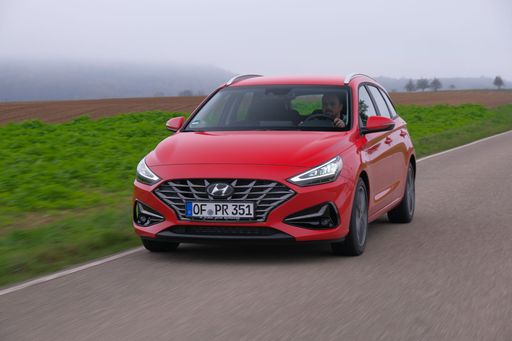 @ hyundai.news
@ hyundai.news
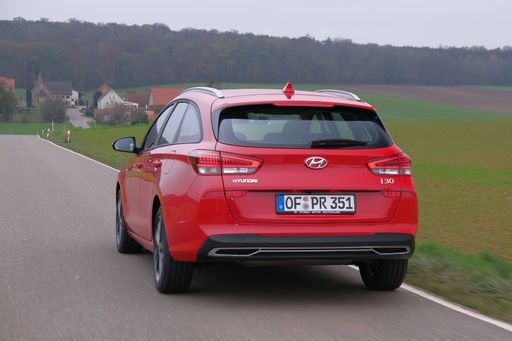 @ hyundai.news
@ hyundai.news
 @ hyundai.news
@ hyundai.news
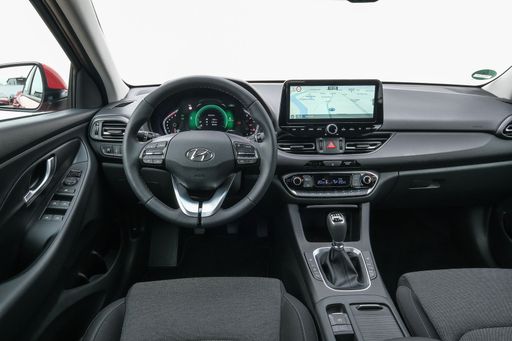 @ hyundai.news
@ hyundai.news
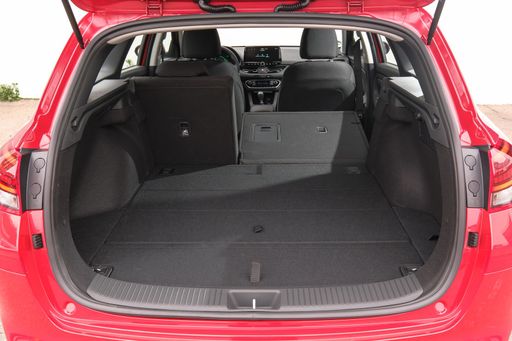 @ hyundai.news
@ hyundai.news
Ford Puma
The Ford Puma presents itself as a stylish compact SUV with a distinctive design that combines practicality with a dynamic driving experience. Its sleek lines and sporty aesthetics make it stand out on the road, while the interior offers a comfortable and tech-savvy environment. With an emphasis on efficiency and a smooth drive, the Ford Puma is well-suited for both urban commutes and countryside adventures.
details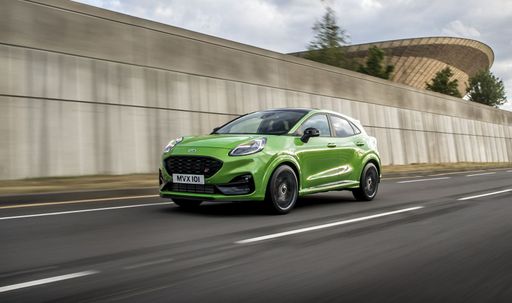 @ puma.fordpresskits.com
@ puma.fordpresskits.com
 @ puma.fordpresskits.com
@ puma.fordpresskits.com
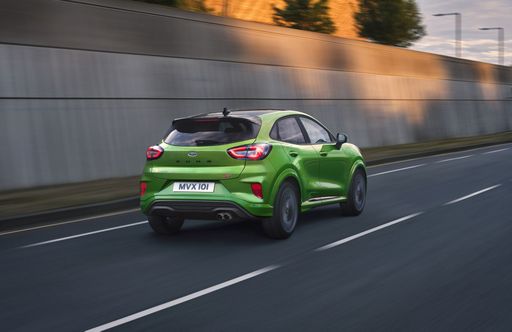 @ puma.fordpresskits.com
@ puma.fordpresskits.com
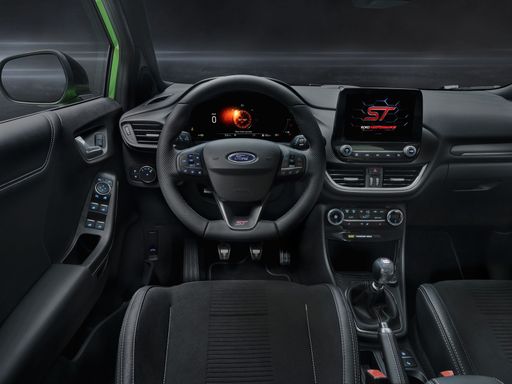 @ puma.fordpresskits.com
@ puma.fordpresskits.com

|

|
|
|
|
Costs and Consumption |
|
|---|---|
|
Price
24500 - 29700 £
|
Price
24800 - 34800 £
|
|
Consumption L/100km
5.6 - 5.9 L
|
Consumption L/100km
5.4 - 6 L
|
|
Consumption kWh/100km
-
|
Consumption kWh/100km
13.1 - 13.7 kWh
|
|
Electric Range
-
|
Electric Range
364 - 376 km
|
|
Battery Capacity
-
|
Battery Capacity
43 kWh
|
|
co2
126 - 133 g/km
|
co2
0 - 136 g/km
|
|
Fuel tank capacity
50 L
|
Fuel tank capacity
42 L
|
Dimensions and Body |
|
|---|---|
|
Body Type
Estate
|
Body Type
SUV
|
|
Seats
5
|
Seats
5
|
|
Doors
5
|
Doors
5
|
|
Curb weight
1316 - 1461 kg
|
Curb weight
1316 - 1563 kg
|
|
Trunk capacity
602 L
|
Trunk capacity
456 - 523 L
|
|
Length
4585 mm
|
Length
4186 - 4226 mm
|
|
Width
1795 mm
|
Width
1805 mm
|
|
Height
1475 mm
|
Height
1550 - 1555 mm
|
|
Payload
439 - 524 kg
|
Payload
367 - 469 kg
|
Engine and Performance |
|
|---|---|
|
Engine Type
Petrol, Petrol MHEV
|
Engine Type
Petrol MHEV, Electric
|
|
Transmission
Manuel, Automatic
|
Transmission
Manuel, Automatic
|
|
Transmission Detail
Manual Gearbox, Dual-Clutch Automatic
|
Transmission Detail
Manual Gearbox, Dual-Clutch Automatic, Reduction Gearbox
|
|
Drive Type
Front-Wheel Drive
|
Drive Type
Front-Wheel Drive
|
|
Power HP
100 - 140 HP
|
Power HP
125 - 168 HP
|
|
Acceleration 0-100km/h
9.8 - 13.3 s
|
Acceleration 0-100km/h
7.4 - 9.8 s
|
|
Max Speed
178 - 197 km/h
|
Max Speed
160 - 210 km/h
|
|
Torque
172 - 253 Nm
|
Torque
170 - 290 Nm
|
|
Number of Cylinders
3 - 4
|
Number of Cylinders
3
|
|
Power kW
74 - 103 kW
|
Power kW
92 - 124 kW
|
|
Engine capacity
998 - 1482 cm3
|
Engine capacity
999 cm3
|
General |
|
|---|---|
|
Model Year
2024
|
Model Year
2024 - 2025
|
|
CO2 Efficiency Class
D
|
CO2 Efficiency Class
D, E, A
|
|
Brand
Hyundai
|
Brand
Ford
|
Hyundai i30 Wagon
Introducing the Hyundai i30 Wagon: A Perfect Blend of Performance and Practicality
The Hyundai i30 Kombi is a testament to the automaker's commitment to delivering high-quality vehicles that cater to a wide range of drivers. This versatile estate car combines sleek style, innovative technology, and efficient performance, making it an attractive option for those seeking a reliable family car or a spacious vehicle for everyday use.
Powerful Yet Efficient: Engine Options
The Hyundai i30 Wagon offers a selection of engine configurations, designed to balance power and efficiency seamlessly. You can choose from conventional petrol engines or the advanced 48V mild-hybrid technology for those looking to minimise their carbon footprint while enjoying an exhilarating drive.
The petrol engines provide a dynamic driving experience, while the mild-hybrid options incorporate a small electric motor to boost efficiency. Both engine types promise smooth, responsive performance, ensuring every drive is a pleasure.
Seamless Transmission Systems
With the i30 Wagon, Hyundai offers both manual and automatic transmission systems to cater to different driving preferences. The manual transmission provides direct control for enthusiasts who enjoy a more hands-on driving experience, while the automatic option is perfect for those prioritising convenience and comfort during their journeys.
Innovative Technology and Features
The interior of the Hyundai i30 Wagon is designed to offer maximum comfort and connectivity. Equipped with the latest infotainment system, drivers and passengers can enjoy access to a wide array of features, ensuring entertainment and connectivity on the go. The system is compatible with Apple CarPlay and Android Auto, providing seamless integration with your smartphone.
Safety technology is also at the forefront, with multiple driver-assistance features that enhance road safety, making the i30 Wagon a smart choice for families and safety-conscious drivers.
Spacious and Versatile Interior
Inside, the i30 Wagon boasts an impressive amount of space, with a boot capacity of 602 litres, easily accommodating the demands of a busy lifestyle. With comfortable seating for up to five passengers and flexible load space, it's perfect for long trips or daily commutes. Practicality is matched with attention to detail in design, making the interior both stylish and functional.
Pricing and Sustainability
The Hyundai i30 Wagon not only provides excellent value for money but also demonstrates a commitment to sustainability. With competitive pricing and efficient fuel consumption, it's an economical choice that doesn’t compromise on performance or quality. CO2 emissions are kept in check, making it an environmentally friendly option within this segment.
Conclusion: The Perfect Automotive Companion
The Hyundai i30 Wagon is an exceptional vehicle that strikes an ideal balance between innovation, style, and practicality. Whether you're navigating city streets or embarking on a countryside adventure, this car provides the reliability, comfort, and performance you require. It's more than just an estate car; it's your perfect automotive companion.
Ford Puma
A Glimpse into the Ford Puma: Fusing Style with Innovation
The Ford Puma stands as a testament to modern engineering fused with style. This compact SUV is not just about aesthetics but brings to the table an array of technical innovations, topped with the reliability and performance Ford is known for. Let's delve into the technical specifics and innovative features that make the Ford Puma a stellar choice for any car enthusiast.
Powertrains and Performance
The Ford Puma is offered with a range of powertrains designed to deliver optimal performance whilst minimising fuel consumption. At the heart of this compact SUV is the 1.0 EcoBoost Hybrid engine, available in both 125 PS and 155 PS variants. This engine is a marvel of engineering, optimised to deliver power efficiently with a remarkable fuel consumption ranging from 5.4 to 5.7 L/100km for manual versions, and slightly higher for the automated variants.
The top-end 1.5 EcoBoost ST variant takes performance up a notch, providing a robust 200 PS that propels the Puma from 0 to 100 km/h in just 6.7 seconds. This variant is perfect for those who prioritise performance and exhilaration in their driving experience.
Mild-Hybrid Technology
The Puma's mild-hybrid technology plays a significant role in enhancing fuel efficiency and reducing emissions. By utilising a belt-driven integrated starter/generator, the Puma recovers energy usually lost during braking, storing it in a 48-volt lithium-ion battery. This stored energy is then used to assist the engine, providing a boost during acceleration and smoothing out the stop-start technology, ultimately leading to enhanced fuel efficiency.
Design and Comfort
The Ford Puma does not compromise on style and comfort with its ergonomic and stylish design. The SUV is available in multiple trims including the ST-Line, Titanium, and the luxurious Vignale editions, each offering unique aesthetic and technological enhancements. These trim levels provide varied offerings in terms of both exterior styling and interior comfort, ensuring there's a Puma that meets every personal preference.
Inside, the Puma offers a driver-focused cockpit with advanced technological integrations such as the SYNC 3 infotainment system, providing seamless connectivity and intuitive control of the vehicle's numerous technological features.
Safety and Technology
Safety remains paramount, and the Ford Puma is equipped with the latest security and technology features. It boasts the Ford Co-Pilot360 suite which includes adaptive cruise control, pre-collision assist with autonomous emergency braking, and lane-keeping assist, enabling a safer driving experience on both city roads and highways.
Versatility and Practicality
Beyond performance and safety, the Ford Puma shines in its versatility. With a boot capacity of 456 litres, it offers ample space for all sorts of adventures, whether you're heading on a family trip or loading sports equipment. Its innovative MegaBox is an extra storage solution, providing additional space below the boot floor.
The Puma's agile handling, paired with its compact dimensions—spanning a length of 4186 to 4266 mm and a width of 1805 mm—makes it an ideal choice for urban commuting and beyond.
Conclusion
In conclusion, the Ford Puma beautifully blends practical features with cutting-edge technology, offering a package that appeals to both the tech-savvy driver and those seeking comfort and reliability. Its range of innovative features, powerful yet efficient engine options, and a design that is both functional and stylish make it a frontrunner in the compact SUV market.
Whether you're drawn by the efficient mild-hybrid engines or the robust performance of the ST variant, the Ford Puma represents a modern driving experience where innovation meets everyday usability.
The prices and data displayed are estimates based on German list prices and may vary by country. This information is not legally binding.
